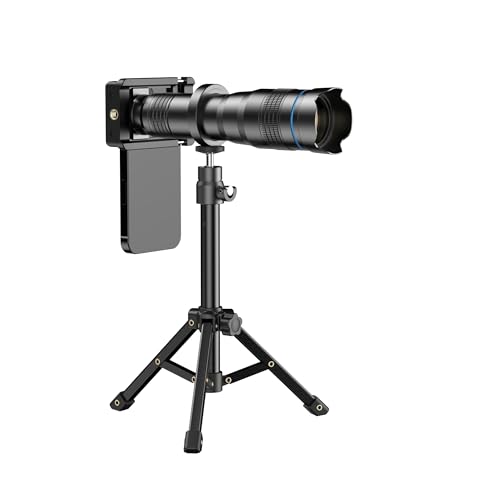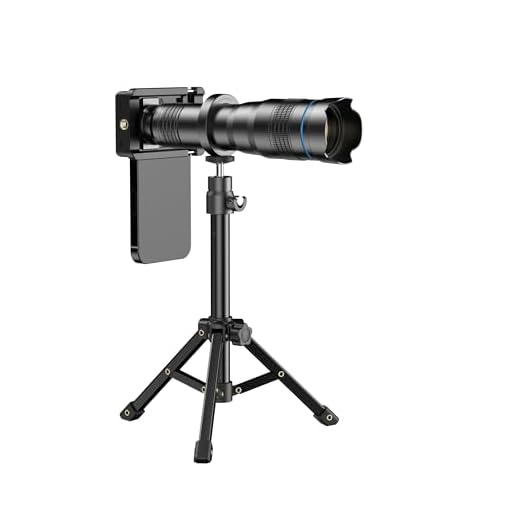


In the world of photography, the smartphone has become a powerful tool, offering convenience and versatility to capture stunning images on the go. With advancements in technology, phone cameras have evolved to rival traditional DSLRs in image quality and control. By understanding the capabilities of your phone camera and learning some key techniques, you can elevate your photography game to achieve DSLR-like results.
While a DSLR offers interchangeable lenses and manual settings for ultimate control, your phone camera can still produce professional-looking photos with the right approach. From composition and lighting to editing and post-processing, there are several ways to maximize the potential of your phone camera and capture images that rival those taken with a DSLR.
Whether you’re a beginner looking to improve your photography skills or a seasoned photographer seeking to make the most of your phone camera, this guide will provide you with tips and tricks to help you use your phone camera like a DSLR. With a few simple adjustments and a creative eye, you can harness the power of your phone camera to create stunning images that stand out from the crowd.
Get the Most Out of Your Phone Camera
Phone cameras have come a long way in recent years, and many of them are capable of capturing stunning images that rival those taken with a DSLR camera. To get the most out of your phone camera, follow these tips:
1. Understand Your Camera Settings
Take the time to familiarize yourself with the settings on your phone camera. Many phones offer manual controls that allow you to adjust settings such as ISO, shutter speed, and white balance. Experiment with these settings to see how they affect your photos.
2. Use Third-Party Apps
There are many third-party camera apps available that offer additional features and controls beyond what the built-in camera app provides. Experiment with different apps to find one that suits your style of photography.
- ProCam
- Camera+ 2
- Halide
By using these tips and tricks, you can take your phone photography to the next level and capture professional-quality images with your phone camera.
Mastering the Basics of Phone Photography
Phone photography has become increasingly popular as smartphones are equipped with advanced camera technology. To make the most of your phone’s camera and achieve DSLR-like results, mastering the basics is essential.
1. Understand Your Phone’s Camera Settings
Before you start shooting, familiarize yourself with your phone’s camera settings. Learn how to adjust exposure, focus, white balance, and other key settings to capture the best possible images.
2. Composition and Lighting
Composition and lighting play crucial roles in photography. Experiment with different angles, perspectives, and lighting conditions to create visually appealing shots. Remember the rule of thirds and use natural light whenever possible for better results.
By mastering these basics of phone photography, you can elevate your skills and capture stunning images that rival those taken with a DSLR camera.
Understanding Your Phone Camera Settings
When using your phone camera like a DSLR, it’s important to understand the different settings available to you. Here are some key settings you should be familiar with:
1. Exposure: Adjusting the exposure on your phone camera can help you capture the perfect lighting for your photos. Experiment with exposure settings to find the right balance.
2. ISO: ISO controls the sensitivity of your camera’s sensor to light. Higher ISO settings are useful in low-light conditions, but they can also introduce noise to your photos.
3. White Balance: White balance settings help you adjust the color temperature of your photos. Choose the appropriate white balance setting based on the lighting conditions.
4. Focus: Most phone cameras offer manual focus options. Experiment with manual focus to ensure your subject is sharp and in focus.
5. Gridlines: Use gridlines on your phone camera to help compose your shots using the rule of thirds. This can improve the overall balance and composition of your photos.
By understanding and experimenting with these settings, you can elevate your phone photography game and capture stunning images that rival those taken with a DSLR.
Using Third-Party Camera Apps
One way to enhance your phone camera’s capabilities and make it function more like a DSLR is by using third-party camera apps. These apps offer advanced features and settings that can help you take better photos.
Some popular third-party camera apps include Camera FV-5, ProShot, Manual Camera, and Open Camera. These apps allow you to adjust settings such as ISO, shutter speed, white balance, focus, and more, giving you greater control over your photos.
Additionally, many third-party camera apps offer manual controls that allow you to fine-tune your shots and achieve the desired look. Experimenting with these settings can help you improve your photography skills and take professional-looking photos with your phone.
Experimenting with Different Shooting Modes
Most smartphone cameras come with various shooting modes that can help you achieve different effects in your photos. Experimenting with these modes can give you a better understanding of how they work and when to use them.
1. Portrait Mode
Portrait mode is great for capturing photos with a shallow depth of field, blurring the background and emphasizing the subject. This mode works well for portraits and close-up shots.
2. Panorama Mode
Use panorama mode to capture wide, sweeping landscapes or cityscapes. This mode allows you to take a series of photos that are automatically stitched together to create a panoramic image.
- Experiment with slow-motion, time-lapse, or HDR modes to add creativity to your photos.
- Practice using manual settings if your phone has them to have more control over your photography.
- Don’t be afraid to try different modes and settings to see what works best for the scene you’re capturing.
Learning about Composition and Lighting
One of the key elements of taking great photos is understanding composition and lighting. Composition refers to how elements are arranged within the frame of the photo. To improve your composition, try using the rule of thirds, leading lines, and framing techniques. Lighting is also crucial for capturing stunning photos. Natural light is often the best choice, so try shooting in the early morning or late afternoon when the light is soft and golden. Avoid harsh overhead light which can create unflattering shadows. Experiment with different angles and positions to find the best lighting for your subject.
Editing Your Photos Like a Pro
Once you have taken your photos with your phone camera and captured the perfect shot, the next step is to edit them like a professional photographer. Here are some tips to help you enhance your photos:
1. Use Editing Apps
There are many editing apps available for smartphones that can help you adjust the brightness, contrast, saturation, and other settings of your photos. Popular apps like Adobe Lightroom, Snapseed, and VSCO are great options for editing your photos like a pro.
2. Crop and Straighten
Cropping your photos can help you improve the composition and remove any distractions. Make sure to straighten your photos if they appear tilted to give them a more professional look.
Pro Tip: Experiment with different editing tools and filters to find the style that best suits your photos.
Accessories to Enhance Your Phone Photography
When it comes to taking your phone photography to the next level, accessories can make a big difference. Here are some accessories that can enhance your phone photography:
| 1. Lens Attachments: | Clip-on lenses can provide different perspectives and effects, such as wide-angle, macro, and fisheye, to elevate your photos. |
| 2. Tripod: | A stable tripod can help you capture sharp images, avoid camera shake, and enable long-exposure shots with ease. |
| 3. Remote Shutter: | A remote shutter allows you to take photos without touching your phone, reducing the risk of camera shake and ensuring sharper images. |
| 4. Portable Lighting: | External lighting sources, such as LED panels or ring lights, can improve the quality of your photos by providing better lighting conditions. |
| 5. Camera Bag: | A camera bag or case can protect your phone and accessories while keeping everything organized and easily accessible for your photography sessions. |
Tips for Capturing DSLR-Quality Photos with Your Phone
1. Use manual mode: Many smartphones offer manual camera controls that allow you to adjust settings such as ISO, shutter speed, and aperture. Experiment with these settings to achieve the desired exposure and depth of field.
2. Clean your lens: A dirty lens can result in blurry or hazy photos. Make sure to clean your phone’s camera lens regularly to ensure sharp and clear images.
3. Use a tripod or stabilizer: To avoid camera shake and capture sharp images, consider using a tripod or stabilizer when taking photos with your phone.
4. Pay attention to lighting: Good lighting is essential for high-quality photos. Avoid harsh overhead lighting and opt for soft, natural light whenever possible. You can also use external lighting sources like a ring light for better results.
5. Experiment with composition: Composition plays a crucial role in photography. Try different angles, perspectives, and framing techniques to create visually appealing and interesting photos.
6. Edit your photos: Post-processing can enhance the quality of your photos. Use editing apps like Lightroom or Snapseed to adjust brightness, contrast, color balance, and other aspects of your images.
By following these tips and techniques, you can elevate your phone photography skills and capture DSLR-quality photos with your smartphone camera.
FAQ
Can I use my phone camera like a DSLR?
Yes, you can use your phone camera like a DSLR by adjusting settings such as ISO, aperture, and shutter speed. There are also apps available that allow you to manually control these settings for more professional-looking photos.
What are some tips for using a phone camera like a DSLR?
Some tips for using a phone camera like a DSLR include learning how to manually adjust settings, using a tripod for stability, experimenting with different angles and compositions, and practicing editing your photos to enhance their quality.
Is it possible to achieve bokeh effect with a phone camera?
Yes, it is possible to achieve a bokeh effect with a phone camera by using the portrait mode or adjusting the aperture setting in certain camera apps. This can help to create a blurred background effect that mimics the shallow depth of field of a DSLR.
What are some recommended camera apps for using a phone camera like a DSLR?
Some recommended camera apps for using a phone camera like a DSLR include ProCamera, Manual, Camera+ 2, and Adobe Lightroom. These apps offer manual control over settings like ISO, aperture, and shutter speed, allowing you to take more professional-looking photos.







